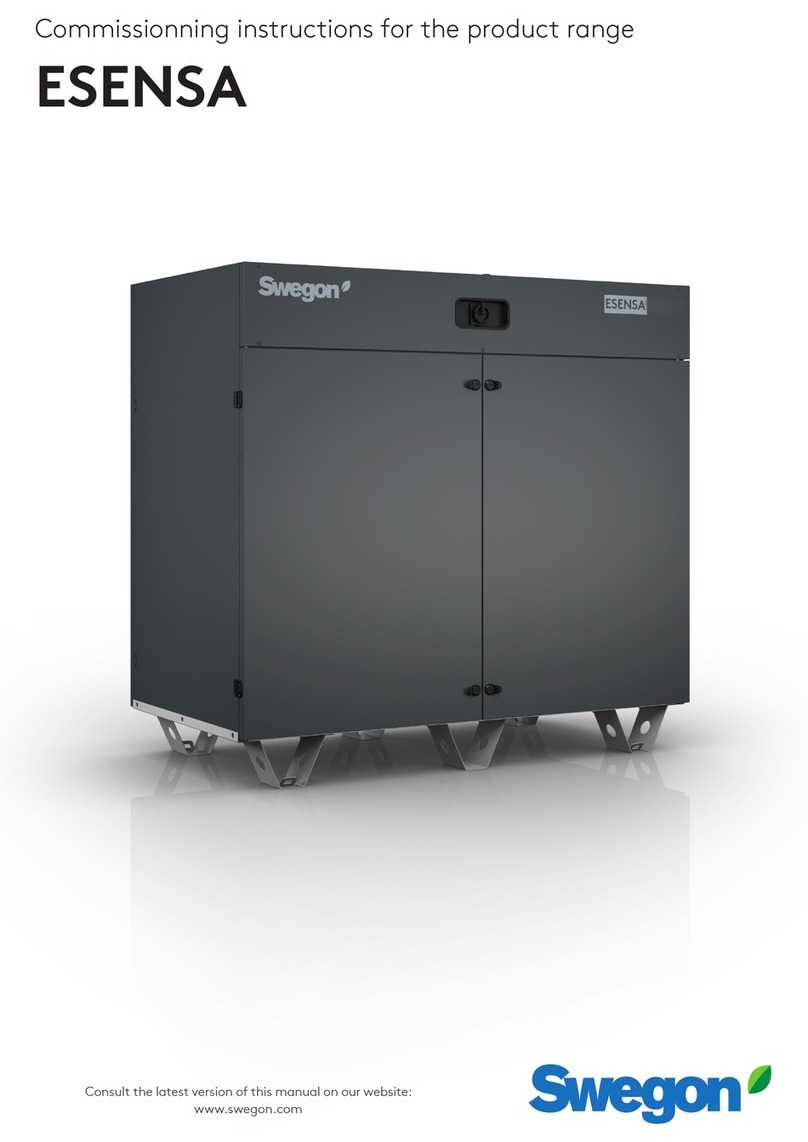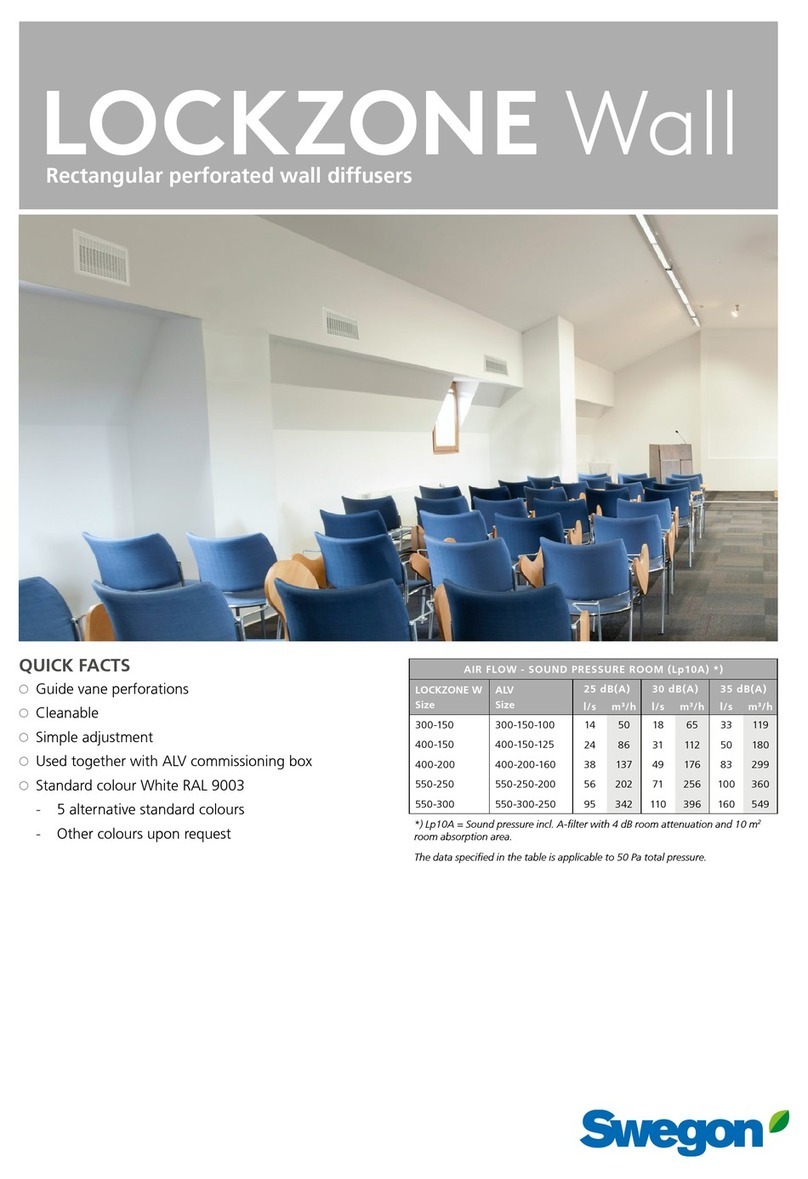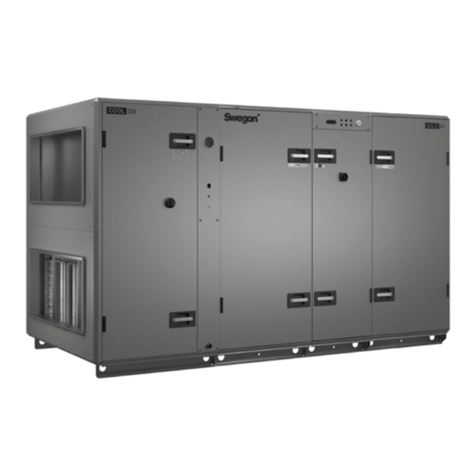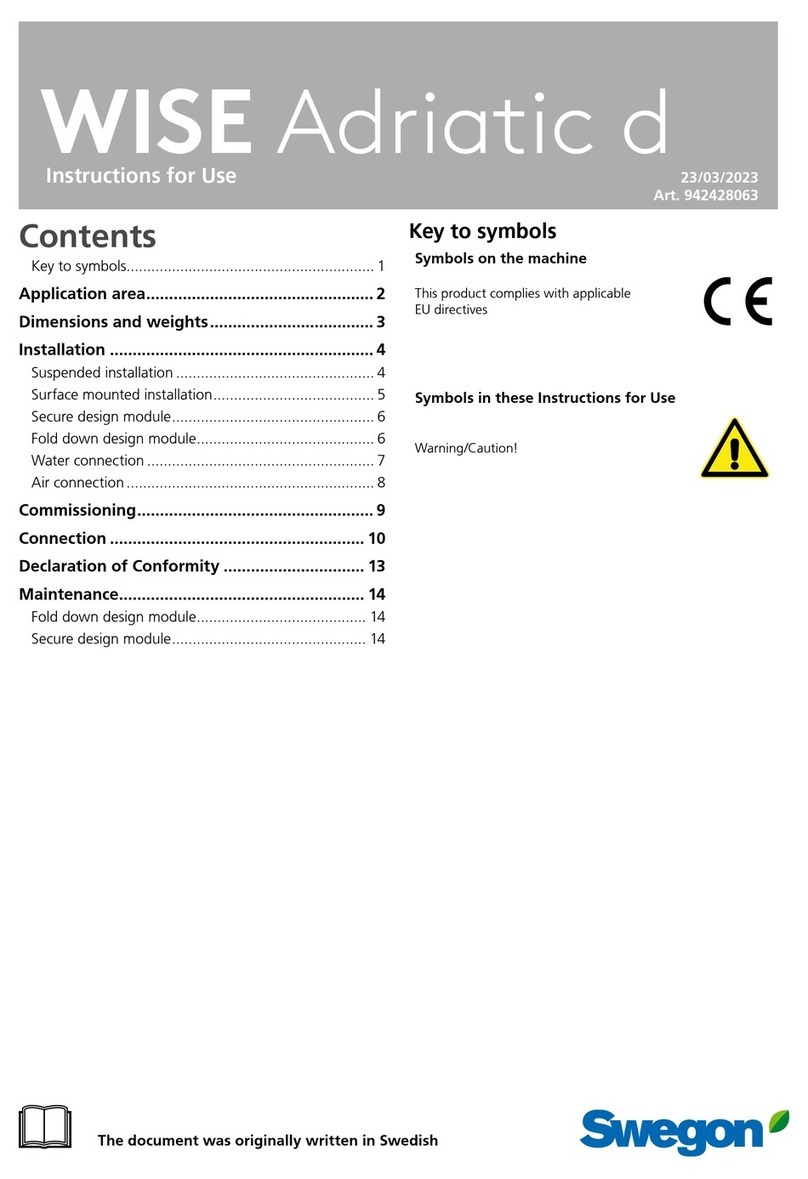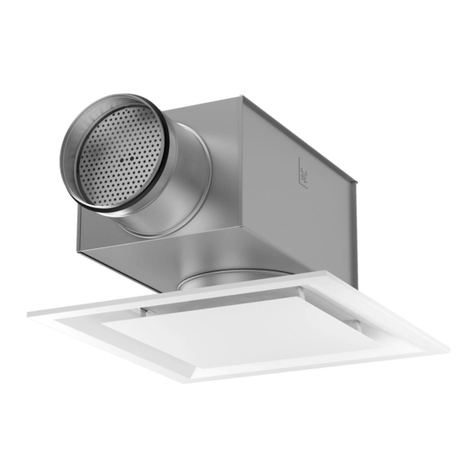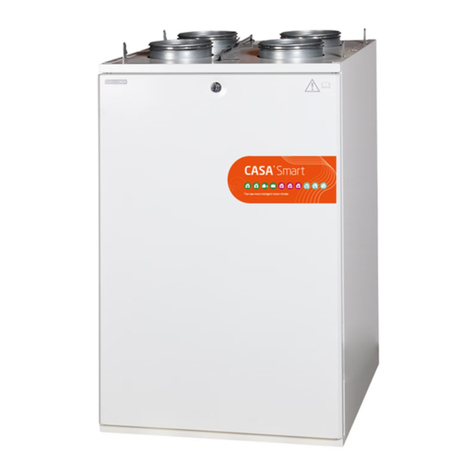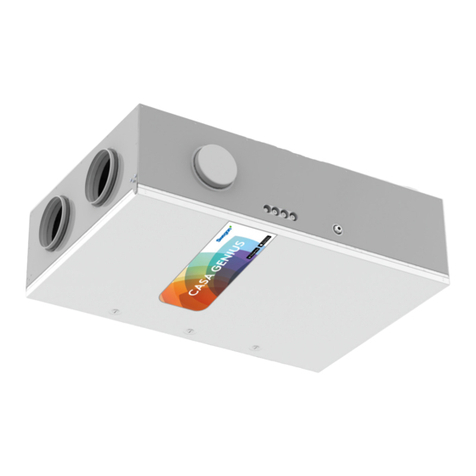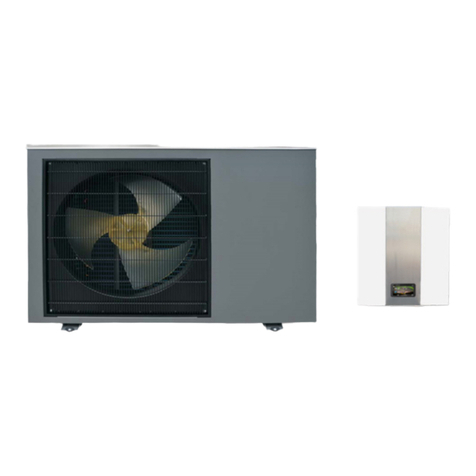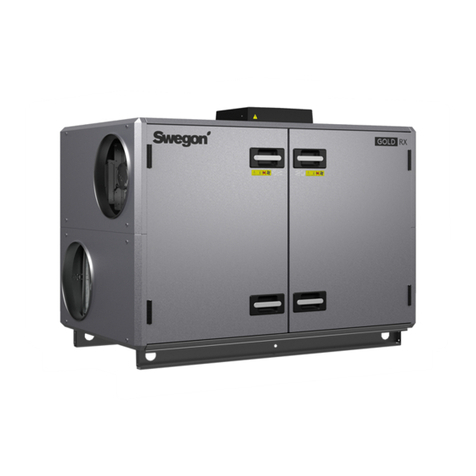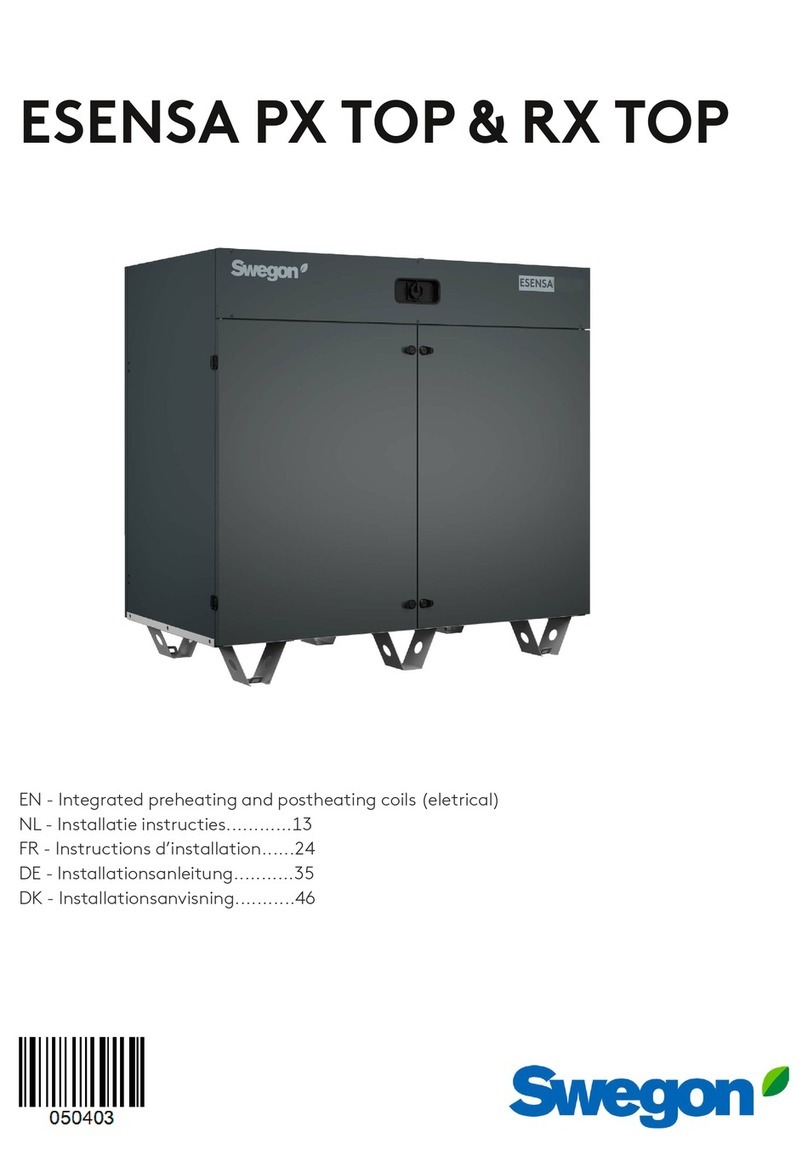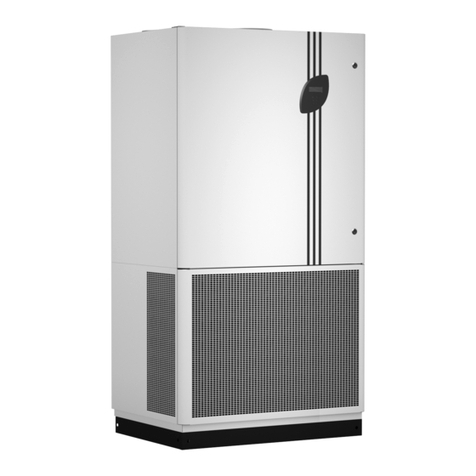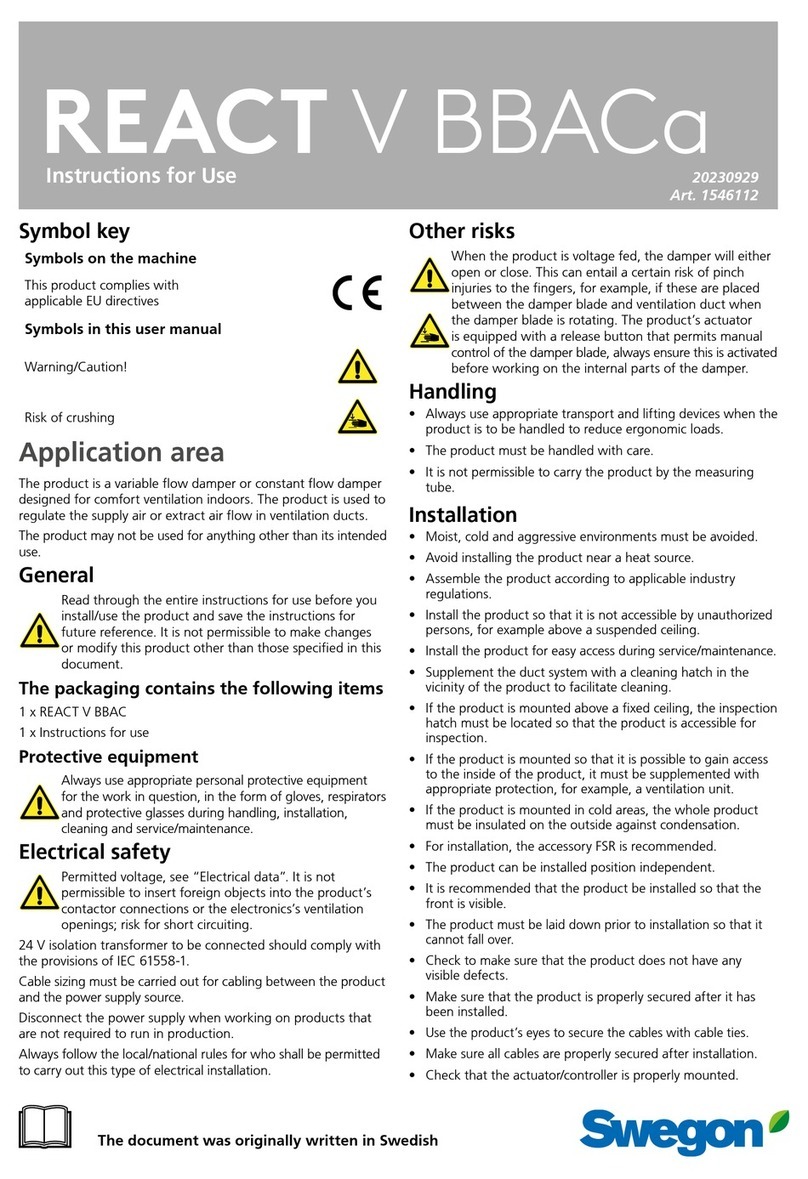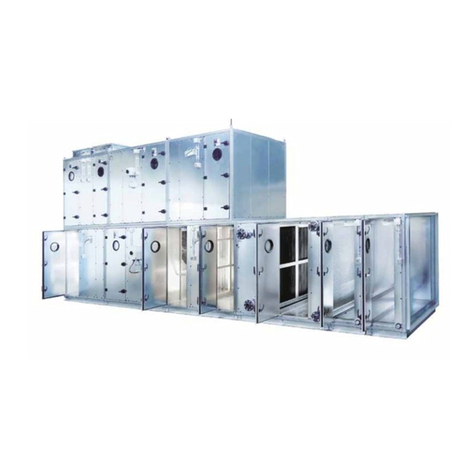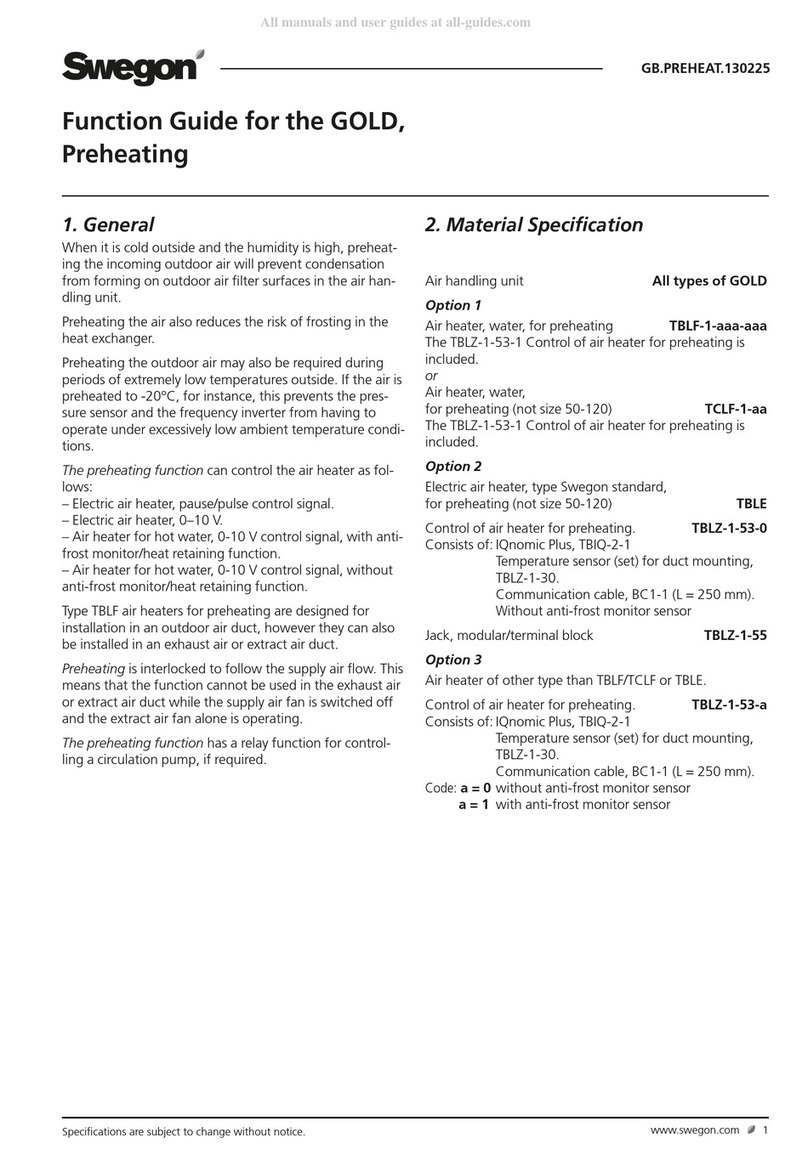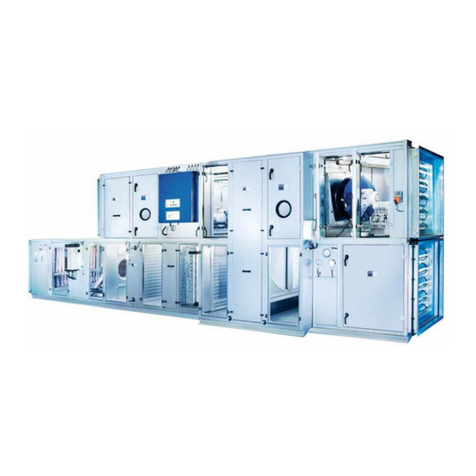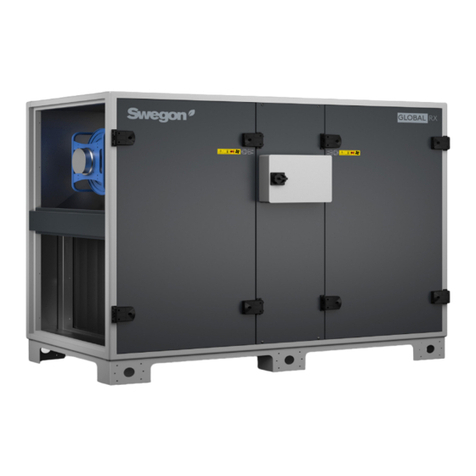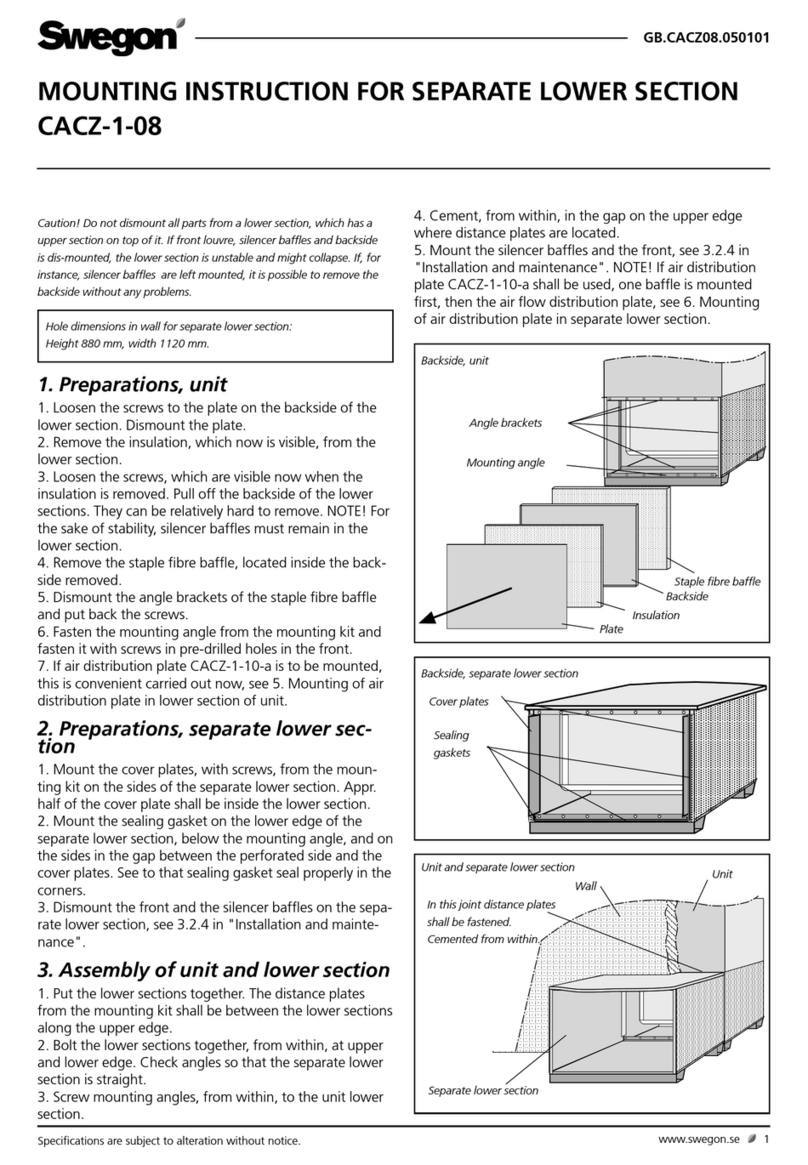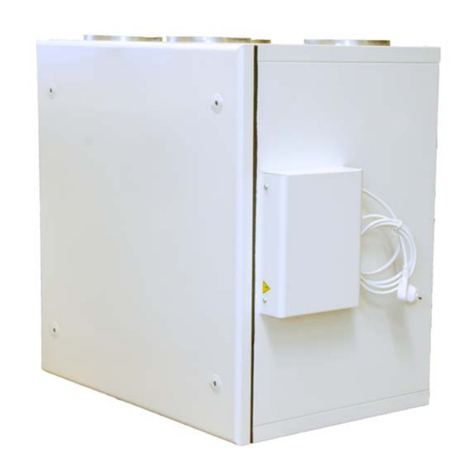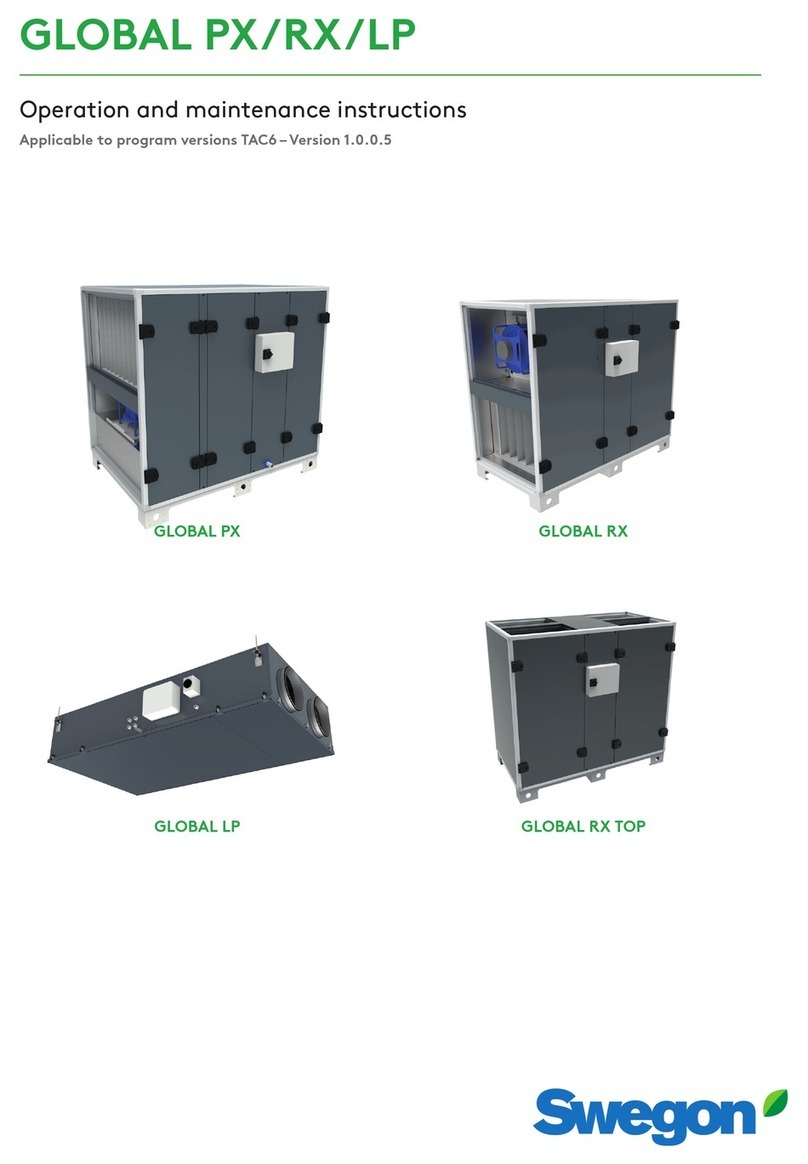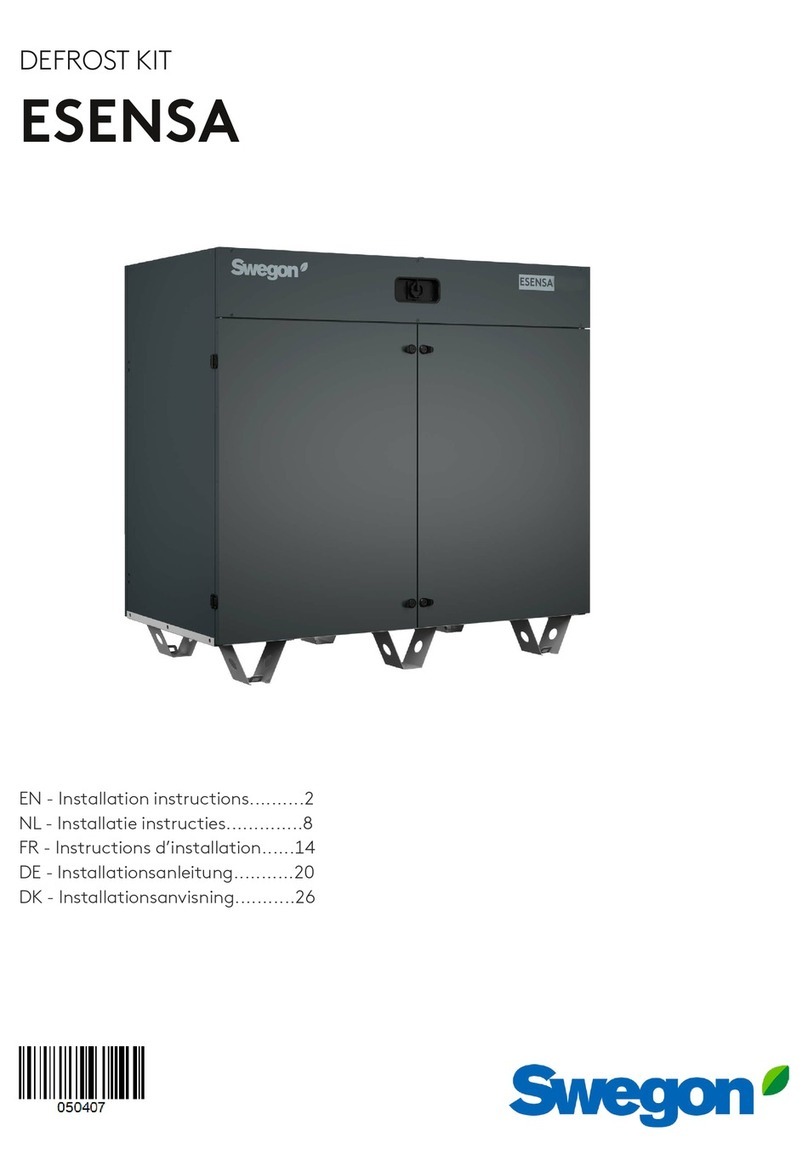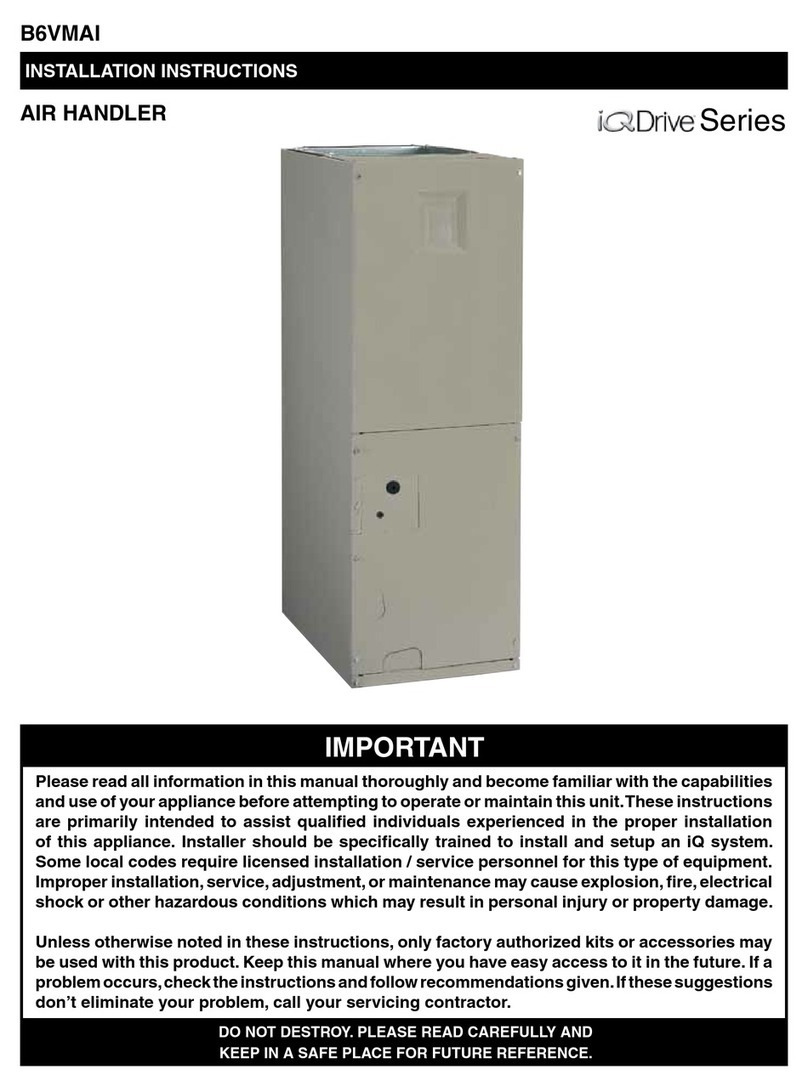
www.swegon.com www.swegon.com
12 13
GB.ESENSA.MO.231025
GB.ESENSA.MO.231025
We reserve the right to alter specifications.
We reserve the right to alter specifications.
1 - Reduced supply air ow :
The heat exchanger is supplied with a frost
protection sensor on the exhaust air (T3). If the exhaust air
temperature (T3) is >1°C and <+5°C :
• In airow control mode and demand control, the supply
air ow will modulate between 100% and 33% (AFlow)of
the setpoint (AFn).
• In pressure control mode, the supply air pressure will
modulate between 100% and 50% (AFlow) of the
setpoint (AFn).
If the exhaust air temperature (T3) is <1°C, the supply air
fans will stop until the exhaust air temperature (T3) is >2°C
for 5 minutes.
2 - Modulating bypass :
The modulating bypass is controlled by the exhaust
temperature sensor (T3). If:
• Exhaust temperature (T3) >+1°C: bypass closed or
controlled by free cooling function.
• Exhaust temperature (T3) ≤ +1°C: bypass will modulate
for the exhaust temperature (T3) to exceed +1°C.
The corresponding supply air temperature will drop due to a
lower airow through the heat exchanger.
Requires a post-heating coil (IBA, KWout, EBA or 3rd part
delivered)
3 - Electrical preheating coil (accessory) :
If an electrical pre-heating coil (KWin) is installed and
congured, the pre-heating coil (KWin)will modulate so the
exhaust temperature is +1°C.
4.5 Frost protection
The frost protection function is always active if the heating
coil has been correctly congured in the product setup.
The monitoring function uses the temperature sensor T7
for the integrated coil (IBA) or for the external coil (EBA).
The function is activated when the temperature of the coil
drops below 4°C. Under these conditions the pump output is
activated and the three-way valve output will be 100% and
the unit will shut down and generate a frost alarm.
There are four strategies to protect the plate heat exchanger
from freezing :
Heating coil
PLATE HEAT EXCHANGER (PX)
4.6 Time Schedule
The controller allows 6 time slots (channels) to be
congured. For each day of the week, the operation mode
can be either AUTO (operate according to time slots) or
manual (selection of speed).
For each time slot select :
• Start time
• Operating mode
• Speed selection: I, II, III for CA/TQ, normal/reduced for
LS/CP and, for all modes, boost level
• Heating setpoint if postheater is present
• Cooling setpoint if postcooler is present
4 - Dierential pressure measurement (Cold climate
option) :
For cold climate conditions (>=-20C), the unit is equipped
with a dierential pressure sensor mounted on the heat
exchanger. The pressure sensor detects when the pressure
drop, due to frost, has become too high. In critical
conditions, the supply air ow will be paused for a short time,
to allow for defrosting.
The frost protection strategy (down regulation supply airow,
modulating bypass or electrical pre-heating) will still be used
as a rst step. The defrost function will only be active if the
frost protection strategy is not sucient.
These Settings can be congured in ADVANCED SETUP
5. Preventive maintenance
Attention : before handling and/or opening the access panels it is compulsory to shut down the unit and disconnect
the power supply using the general switch located on the front panel.
Do not isolate the power supply whilst the unit is running. If KWin and\or KWout are installed, then isolate the
corresponding power supplies.
Regular maintenance is essential to guarantee good operation of the air handling unit and a long service life. The maintenance
frequency will depend on the application and on the actual environment conditions but the following are general guidelines:
Replace the lters with a kit of replacement lters.
Check for any alarms indicated on the control device. In case of
an alarm refer to troubleshooting section.
Check the state of lter clogging. The control device allows a
pre-dened ‘lter alarm’ threshold to be set. Replace lters
if necessary. Filters that are too clogged can generate the
following problems:
- Insucient ventilation.
- Excessive increase of fan rotation speed.
- Excessive sound levels.
- Excessive power consumption (power consumption will
increase exponentially to an increase in pressure drop, for a
constant airow).
- Unltered air passing through the heat exchanger
(risk of clogging) and into ventilated rooms.
The list of replacement lter kits for each unit can be
downloaded from our website.
- To locate the lter, refer to schemas on page 9 to 14.
- Inspection and cleaning of the inside of the unit:
• Vacuum clean any accumulations of dust in the unit.
• Inspect and gently vacuum clean the heat exchanger if
necessary. Use a brush to protect the ns.
• Clean any condensation stains.
• For PX units, clean any accumulations in the drain pan.
5.1 Once the unit operates in
normal condition
5.2 Every 3 months
In order to protect the rotary heat exchanger from freezing,
the strategy for frost protection consists of modulating the
speed of the rotating heat exchanger, which is linked to the
outdoor air temperature (sensor T1).
If the outdoor air temperature < T°AF (default -9°C): the
rotation speed of the heat exchanger is reduced to avoid the
risk of icing. To exit this anti-frost protection: T°(T1) ≥ T°AF for
5 minutes.
These Settings can be congured in ADVANCED SETUP.
ROTARY HEAT EXCHANGER RX
